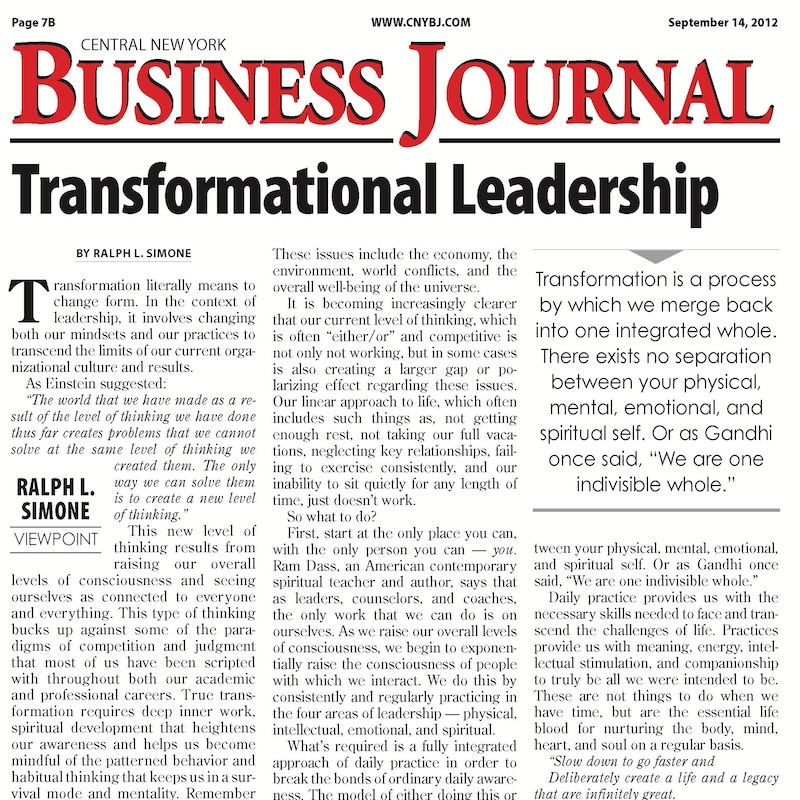Transformation literally means to change form. In the context of leadership, it involves changing both our mindsets and our practices to transcend the limits of our current organizational culture and results.
As Einstein suggested:
“The world that we have made as a result of the level of thinking we have done thus far creates problems that we cannot solve at the same level of thinking we created them. The only way we can solve them is to create a new level of thinking.”
This new level of thinking results from raising our overall levels of consciousness and seeing ourselves as connected to everyone and everything. This type of thinking bucks up against some of the paradigms of competition and judgment that most of us have been scripted with throughout both our academic and professional careers. True transformation requires deep inner work, spiritual development that heightens our awareness and helps us become mindful of the patterned behavior and habitual thinking that keeps us in a survival mode and mentality. Remember that the only thing that past success guarantees is past success.
Transformational leadership requires an integrated approach to life and leadership that radically challenges our thinking. We need to apply this higher level of consciousness, which is cultivated by doing deep spiritual work on both local and global issues that challenge us.
These issues include the economy, the environment, world conflicts, and the overall well-being of the universe.
It is becoming increasingly clearer that our current level of thinking, which is often “either/or” and competitive is not only not working, but in some cases is also creating a larger gap or polarizing effect regarding these issues. Our linear approach to life, which often includes such things as, not getting enough rest, not taking our full vacations, neglecting key relationships, failing to exercise consistently, and our inability to sit quietly for any length of time, just doesn’t work.
So what to do?
First, start at the only place you can, with the only person you can — you. Ram Dass, an American contemporary spiritual teacher and author, says that as leaders, counselors, and coaches, the only work that we can do is on ourselves. As we raise our overall levels of consciousness, we begin to exponentially raise the consciousness of people with which we interact. We do this by consistently and regularly practicing in the four areas of leadership — physical, intellectual, emotional, and spiritual.
What’s required is a fully integrated approach of daily practice in order to break the bonds of ordinary daily awareness. The model of either doing this or doing that is replaced with doing this and doing that. Planning and allowing for daily practices in the spiritual, physical, mental, and emotional dimensions of our lives is essential for transforming ourselves and our organizations.
Transformation is a process by which we merge back into one integrated whole. There exists no separation between your physical, mental, emotional, and spiritual self. Or as Gandhi once said, “We are one indivisible whole.”
Daily practice provides us with the necessary skills needed to face and transcend the challenges of life. Practices provide us with meaning, energy, intellectual stimulation, and companionship to truly be all we were intended to be. These are not things to do when we have time, but are the essential lifeblood for nurturing the body, mind, heart, and soul on a regular basis.
“Slow down to go faster and deliberately create a life and a legacy that are infinitely great. Trust your innermost feelings in all of your dealings. Stay true to your core, and you will always be more.”
— Ralph Simone
Ralph L. Simone is founder of Emergent (formerly Productivity Leadership Systems) in Baldwinsville
Originally appeared in Central New York Business Journal September 14th 2012

Comments (0)